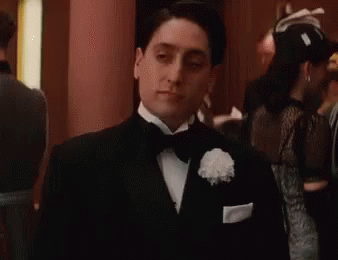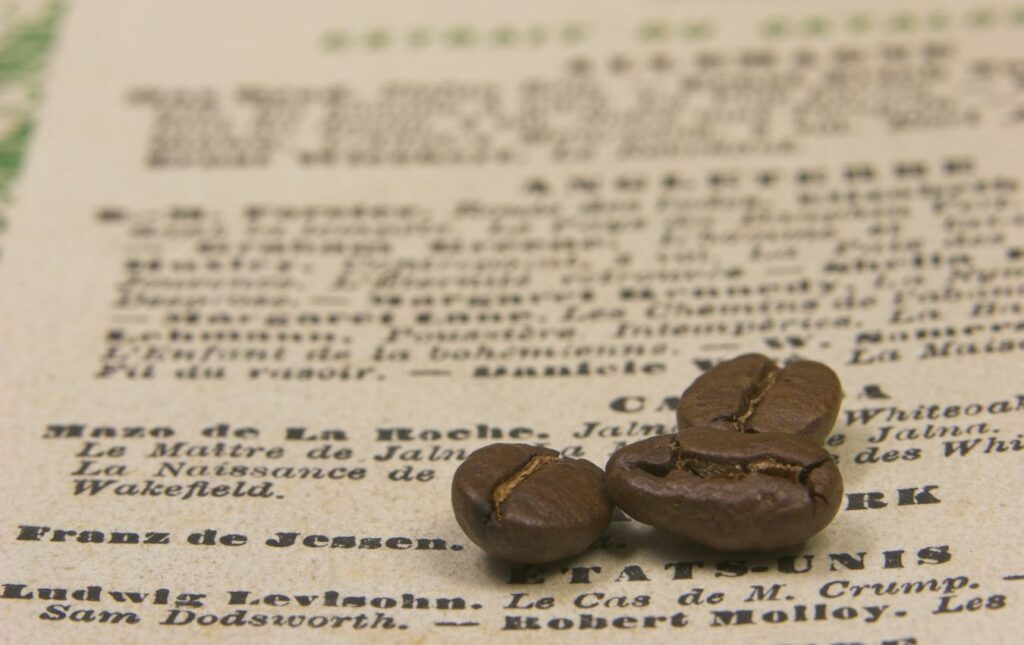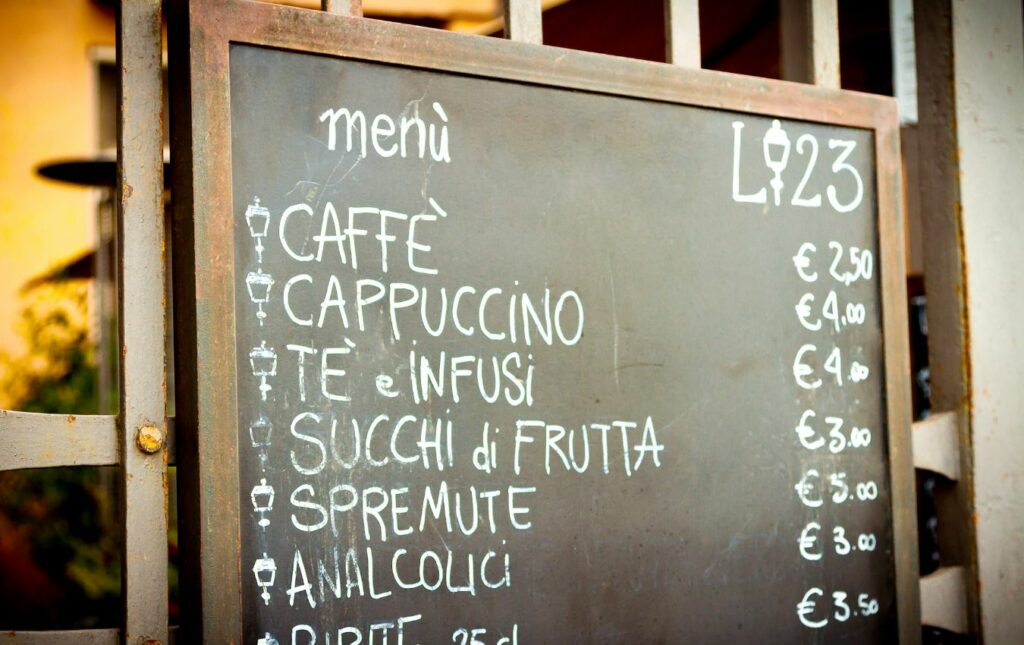Table of Contents
Ah, Italy—the land of love, art, food, and, of course, exceptional coffee! When it comes to Italian coffee culture, you’re not just ordering a shot of espresso; you’re participating in a ritual deeply embedded in the fabric of Italian society.
From the coffee machine that brews the coffee to the elegant flipping of a teaspoon, every moment is a blend of history, tradition, and the aroma of a perfectly crafted latte.
Why Explore Italian Espresso Culture?
“Perché no?” as Italians would say, which means “Why not?” Italian espresso is more than just a cup of coffee; it’s a snapshot of Italian culture. The way espresso is made, served, and consumed offers invaluable insights into the Italian way of life.
By understanding this culture, you can appreciate not only the skill behind a perfect espresso but also the social interactions and community that evolve around coffee shops, or “caffè,” as they are known in Italy.
Italian Coffee Experience


Let’s set the stage. Imagine walking into a quintessential Italian café in Venice. Picture this: There’s a guy in the corner, deeply engrossed in an Italian newspaper, muttering something about the latest soccer match. You’ve got an elderly couple near the counter, deep in conversation—swapping family tales, no doubt. And there’s the barista, a wizard behind the espresso machine, pulling shots with the focus of a jeweler setting a diamond. Yep, it’s a microcosm of society with one binding factor—everyone’s sipping on espresso at Caffè Florian, the renowned coffee house in Piazza San Marco.
Now, for those who don’t know, espresso isn’t just a type of coffee; it’s a full-blown ritual in Italy. You see, in this boot-shaped wonderland, coffee is no simple affair. It’s not like grabbing a Venti, double-shot, caramel, skimmed, and heaven-knows-what-else from your local Starbucks. No siree! Ordering an espresso in Italy is a simple yet profound act akin to reciting a small prayer.
You walk up to the counter and say, “Un caffè, per favore,” and what you get is a tiny cup of liquid gold—a powerful, aromatic potion that’ll kickstart your day faster than you can say, “Grazie!” Italians like to enjoy a cup of coffee after the dessert course as well, ensuring they get their dose of caffeine to end the meal on a high note with Italian breakfast pastries.
Ah, but here’s where it gets interesting! While the rest of the world is downing gallons of watered-down coffee, Italians have their own set of unwritten rules. For starters, forget the idea of sipping your beverage on the go. That’s a big no-no! Italians treat their espresso with the respect it deserves, taking the time to savor it, often while standing at the bar. To-go cups? You might as well be asking for a pizza topped with pineapple; it’s borderline sacrilege!
And then there’s the timing. God forbid you order a cappuccino after 11 a.m. Doing so might as well be a declaration that you’re not “in the know.” Cappuccinos are strictly a morning affair, limited to the time of day when they are traditionally enjoyed in Italy.
After that, it’s all about espresso or perhaps a “caffè macchiato” if you need just a smidge of milk. Oh, and if you think this is just for the old-timers, think again. Even the hip, young Italians will give you the side-eye if you flub the coffee rules. And like any culture, that of Italian coffee comes with seemingly mysterious laws. Order a latte, and you’ll receive a glass of milk (which is exactly what you ordered).
Now, don’t get me wrong; it’s not all doom and gloom if you mess up. In fact, many Italians find it rather endearing when tourists make an effort, even if it’s not pitch-perfect. You’re not going to get chased out of the café with a rolling pin or anything. But hey, when in Rome, do as the Romans do, right?
History of Coffee in Italy

Although the coffee bean originated far from Italy’s borders, Italians have made coffee an indelible part of their culture. The 19th century was especially crucial in defining what we know today as Italian coffee culture. This period saw the espresso machine make its grand entrance into Italian society, forever changing the way coffee was consumed.
Since the first coffee was poured in Venice, Italians never ceased to claim their sincere adoration for a beverage that would have later become a real cornerstone of Italian culture. The Serenissima Republic of Venice was, in fact, one of the first European states to import coffee beans when they reached the Old Continent. It was in Venice, a port city of merchants and traders, that coffee was first imported into Europe and introduced to Italians in the 16th century.
It wasn’t until the 19th century that espresso became the coffee of choice in Italy. Before the invention of the espresso machine, coffee was brewed using less efficient, slower methods. Espresso, literally meaning “pressed out,” offered a quick yet flavor-packed coffee experience, which Italians quickly embraced. Suddenly, the shot of espresso became a quintessential part of Italian life.
The Espresso Revolution: Italian Innovations brought about a significant change in espresso technology with the introduction of the spring lever by Achille Gaggia in 1946. Gaggia’s machine could produce espresso shots in 30-45 seconds, with pressure spiking up to 14 bars – enough to produce the rich, velvety crema that defines a perfect espresso.
Let’s start with its history – Espresso machines became popular in the “American bars,” where customers could stand at the counter instead of sitting at the table. The first one to be opened in Italy was the Caffé Maranesi, located in Florence and also known as Caffè dei Ritti, referring to “the standing people” that were hosted inside.
Ordering Coffee in Italy
Let’s get into the nitty-gritty of the actual coffee-ordering process. You can order coffee in two distinct ways: “Al Banca” (at the counter) or “Al Tavolo” (at a table).
Coffee at the Counter (Al Banca)
This is where speed meets style. Stand shoulder-to-shoulder with locals, order your shot of espresso, and drink it while standing at the counter. You get a glass of water to cleanse your palate before or after the coffee, embodying the Italian philosophy of “aqua e caffè,” water and coffee.
Coffee at a Table (Al Tavolo)
If you prefer to savor your cup of coffee while people-watching in a picturesque Italian square, you’d opt for “Al Tavolo.” But remember, sitting down comes with extra charges.
When to Drink Your Coffee in Italy
Unlike in other places where coffee is consumed all day long, in Italy, there are unspoken rules about when certain types of coffee are appropriate. Forget about ordering a cappuccino after 11 am! Milky coffees are morning affairs. By afternoon, you should be switching to shorter, stronger coffees.
How Do You Order Coffee in Italy? Your Guide to Sipping Like a Local

1. Un Caffé (Espresso / Caffé Normale / Short Black)
Oh, the humble espresso—where it all begins. Un caffé is not just a drink; it’s an Italian mantra. A tiny cup that holds within it the entire universe of Italian history, lifestyle, and yes, a fair amount of sass. Walk into any Italian caffè, ask for “Un Caffé,” and watch the barista nod with approval. This is the quintessence of Italian coffee culture: pure, unadulterated, and exquisitely simple. It’s like the “little black dress” of Italian coffee—a classic that never goes out of style!
2. Caffé Americano
“Look, an American!” you might as well announce as you order this Caffè Americano. But that’s okay! The Caffé Americano is espresso’s laid-back cousin, enjoying life at a slower pace. It’s the Italian nod to American coffee culture, incorporating a shot of espresso with added hot water, similar to a Caffè Lungo, to mellow things down. Imagine taking a Vespa ride through the rolling hills of Tuscany—that’s what sipping an Americano in Italy feels like.
If you need a proper caffeine hit go for a Caffé Doppio (corsivo) which is simply a double shot espresso.
3. Caffé Freddo or Cappuccino Freddo
Ready to beat the Mediterranean heat? Let’s talk cold coffee, Italian-style. Whether you opt for a Caffé Freddo or a Cappuccino Freddo, you’re basically summoning Italian summer in a cup. Picture yourself lounging by the Italian Riviera, sun-kissed and refreshed—that’s the essence of a Caffé Freddo.
4. Caffé Macchiato
What do you get when you throw a drop of hot milk or steamed milk into a shot of espresso? A coffee that’s “stained” with milk, also known as Caffé Macchiato. This is your drink if you want to dip your toes into the world of milky coffees but are not ready to fully commit. It’s like adding a tiny dollop of cream to spaghetti carbonara—it may be small, but it makes all the difference!
5. Caffé Shakerato
This is what James Bond would order if he were an Italian coffee aficionado. Imagine a shot of espresso, shaken, not stirred, with ice and sugar all mixed together in a cocktail shaker. What you get is a Caffé Shakerato, a frothy, cold cocktail delight perfect for hot Italian afternoons. Slide on your shades, sip your Shakerato, and feel like 007 under the Tuscan sun.
6. Caffè Estivo
Summer in a cup? Yes, please! Caffè Estivo is a smooth blend of espresso and cold milk, designed to lower your temperature but raise your spirits. It’s the affable friend at the party, bringing everyone together for some cool, creamy joy. Picture yourself walking through a sunflower field in rural Italy—Caffè Estivo is that feeling but drinkable.
7. Caffé Corretto
Have you ever thought, “I love my espresso, but I wish it had more…character”? Enter Caffé Corretto, espresso’s rebellious sibling, spiked with a shot of liquor like grappa or sambuca. It’s the Italian way of saying, “Life is short; let’s make it interesting.”
A Corretto is like that unexpected twist in an Italian opera—a high note that steals the show! In colder northern Italy, Caffé Corretto is enjoyed any time of day to keep warm!
Moretta di Fano, a type of Caffè Corretto, is also a popular choice. It includes splashes of anise liqueur, brandy or cognac, and rum, giving it an extra kick and a unique flavor.
8. Caffè Ginseng
Coffee with benefits? We’re talking about health benefits! A harmonious blend of espresso, ginseng root, and barley, Caffè Ginseng is the wellness guru of Italian coffee culture. It’s like yoga for your taste buds and a spa day for your soul. This is the cup you sip when you’re taking scenic drives through Italy’s wine country but still want to feel virtuous.
9. Cappuccino
Ah, the darling of the coffee world—the Cappuccino! A morning indulgence that combines espresso, hot milk, and a mountain of frothy milk. This is your sunrise in a cup, your Italian breakfast kiss. But remember, timing is everything; no self-respecting Italian would be caught sipping a cappuccino post-morning!
10. Caffè Marocchino Aka Espressino or Mocacchino
Last but definitely not least, let’s talk about the diva of Italian coffee types: the Caffè Marocchino, also known as Espressino or Mocacchino. This mini marvel blends espresso with hot milk and a sprinkle of cocoa powder, creating a miniature dessert in a demitasse. If Italian coffee types were movie stars, the Marocchino would be the Sophia Loren of coffees—timeless, luxurious, and a little bit indulgent.
It’s worth noting that some variations of the Caffè Marocchino include a dollop of whipped cream on top, adding an extra layer of richness to the already decadent drink.
A Final Sip: The Espresso as a Cultural Mirror
So there you have it, a snapshot into the world of Italian espresso culture. It’s not just a drink; it’s a way of life, a daily ritual, and a social glue that holds the community together. You might say it’s the Italian answer to British tea culture. But let’s not stir that pot, shall we? One thing’s for sure: once you’ve had a taste of genuine Italian espresso, your coffee standards will rise faster than foam on a Cappuccino. Salute!
